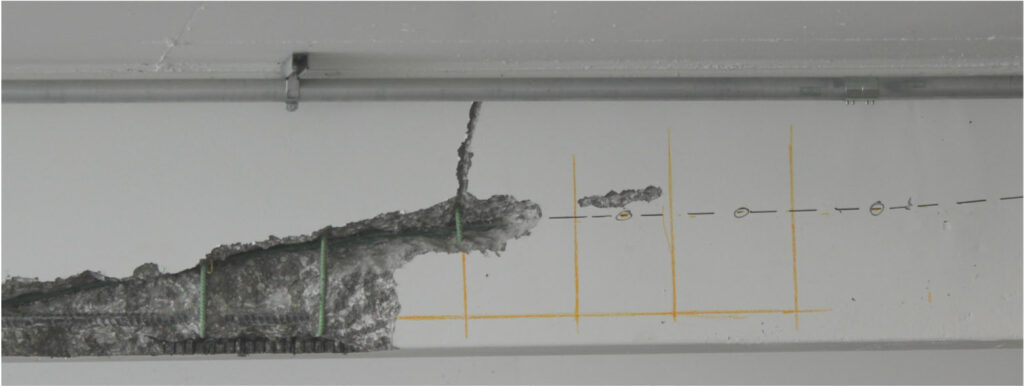The Significance of Accurate Concrete Scanning in Finding Underground Hazards
The ability to accurately detect and map these underground threats is not just an issue of benefit yet a critical aspect of guaranteeing the safety of both building and construction workers and the integrity of the project itself. By deploying innovative scanning modern technologies and methodologies, experts can reveal hidden threats, avoid expensive problems, and eventually lead the means for smoother and much safer building and construction endeavors.
Advanced Scanning Technologies for Detection
Sophisticated radar systems are transforming the area of below ground detection by supplying unrivaled accuracy and performance. These advanced scanning innovations make use of ground-penetrating radar (GPR) to develop comprehensive photos of subsurface frameworks, supplying insights into what lies below the surface area with amazing clearness. By producing high-frequency pulses right into the ground and determining the reflections, radar systems can identify variations in material structure and identify below ground dangers such as gaps, pipelines, and wires.
One of the essential advantages of these advanced radar systems is their non-invasive nature, permitting for comprehensive assessments without causing damage to the existing structures. This not only guarantees the safety and security of the surrounding environment however likewise reduces the need for expensive repair work or disruptions to ongoing construction projects. Additionally, the real-time information supplied by these scanning innovations makes it possible for fast decision-making and improves general job effectiveness.
Relevance of Subsurface Mapping

Precise subsurface mapping assists in stopping pricey problems to existing underground framework, decreasing the danger of mishaps, and preserving task timelines. It enables task supervisors to make enlightened decisions relating to website preparation, tools release, and source allocation. Additionally, subsurface mapping permits far better coordination among different groups servicing a job and helps in following regulative requirements associated with below ground energy discovery.
Mitigating Threats in Building And Construction Tasks
Effective danger mitigation strategies are vital for making sure the success and security of building projects. One essential aspect of mitigating threats in construction tasks is comprehensive planning and assessment at the preliminary phases.
In addition, establishing clear interaction channels amongst all job stakeholders and ensuring stringent adherence to safety methods are vital components of danger mitigation. Regular examinations, quality control measures, and tracking of work progress can aid in recognizing and addressing any arising threats quickly. Moreover, having contingency plans a knockout post in position for unanticipated difficulties can dramatically lower the influence of disturbances on the project. By proactively executing robust danger mitigation methods, construction tasks can decrease hold-ups, cost overruns, and safety occurrences, eventually causing effective task end results.

Protecting Against Costly Damages and Hold-ups
To minimize monetary losses and job problems, effective strategies should be applied to read this post here protect against expensive damages and delays in building tasks. Determining these blockages early on assists in intending the job format extra effectively and staying clear of possible problems throughout excavation.
In addition, buying training programs for building workers on the importance of concrete scanning and secure excavation practices can dramatically decrease the threat of hold-ups and mishaps. Clear communication channels in between project supervisors, engineers, and on-site employees are also vital to make sure that every person knows the possible hazards and complies with the necessary procedures to avoid expensive problems. By focusing on proactive steps like concrete scanning and promoting a society of security and awareness, building tasks can lessen the economic effect of unexpected underground blockages and prevent pricey delays.
Ensuring Security of On-Site Employee
By prioritizing positive actions such as thorough training programs and clear communication channels, building and construction jobs can ensure the security of on-site employees in the middle of the potential dangers detected via concrete scanning. Proper training gears up workers with the knowledge and skills needed to browse construction sites safely, particularly when threats are identified through scanning processes. Training needs to cover risk recognition, emergency treatments, and the appropriate utilization of personal safety equipment to reduce risks successfully.
Furthermore, developing clear interaction networks is important for sharing details concerning recognized dangers immediately. This makes certain that all on-site personnel are conscious of possible threats and can take necessary precautions to avoid accidents. Normal safety and security instructions, toolbox talks, and consistent updates regarding scanning results help keep every person notified and proactive in maintaining a secure workplace.
Moreover, carrying out stringent adherence to safety protocols and regulations, conducting routine safety audits, and fostering a society of security consciousness amongst employees are important parts in making certain the wellness find this of on-site personnel throughout building projects - RainierGPR Concrete Scanning. Aggressive safety and security steps not only secure workers from injury but also add to the general success and efficiency of the task
Conclusion
Finally, specific concrete scanning plays a crucial function in identifying underground hazards. Using sophisticated scanning technologies and subsurface mapping aids minimize risks in building jobs, stopping expensive damages and delays. By making certain the security of on-site personnel, exact scanning can dramatically enhance the effectiveness and success of construction operations. It is imperative for building business to focus on using exact scanning methods to reduce prospective threats and ensure a smooth building procedure.

By proactively implementing durable risk reduction techniques, building and construction projects can minimize delays, cost overruns, and safety and security incidents, ultimately leading to effective project end results. - RainierGPR Concrete Scanning
To reduce financial losses and project setbacks, reliable strategies have to be executed to prevent costly problems and hold-ups in building tasks. By prioritizing aggressive actions like concrete scanning and promoting a society of safety and security and understanding, construction projects can reduce the economic impact of unforeseen below ground blockages and avoid pricey delays.
By prioritizing positive measures such as extensive training programs and clear interaction channels, building tasks can ensure the safety of on-site workers in the middle of the possible dangers spotted with concrete scanning. Making use of advanced scanning innovations and subsurface mapping helps minimize risks in construction projects, avoiding expensive problems and delays.